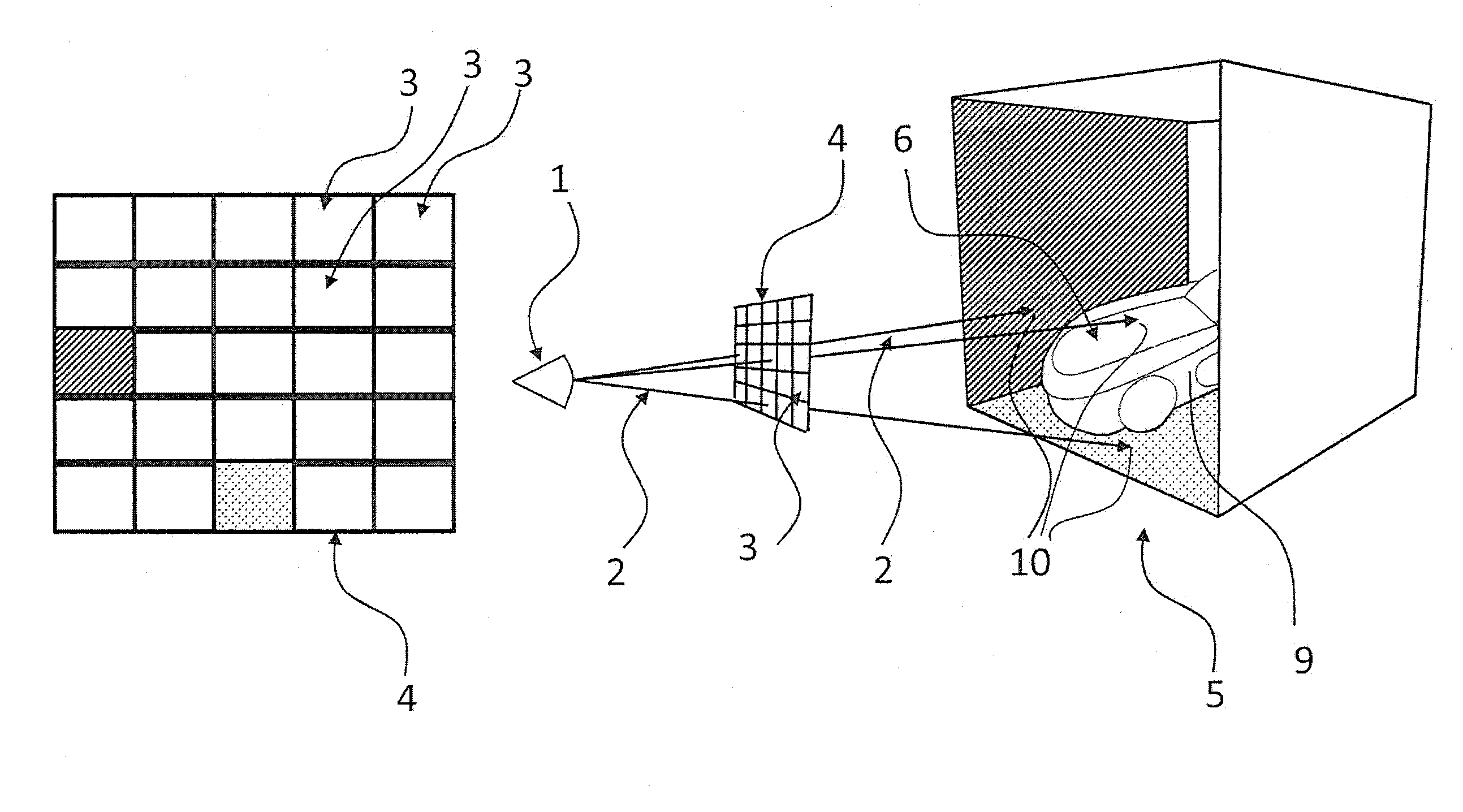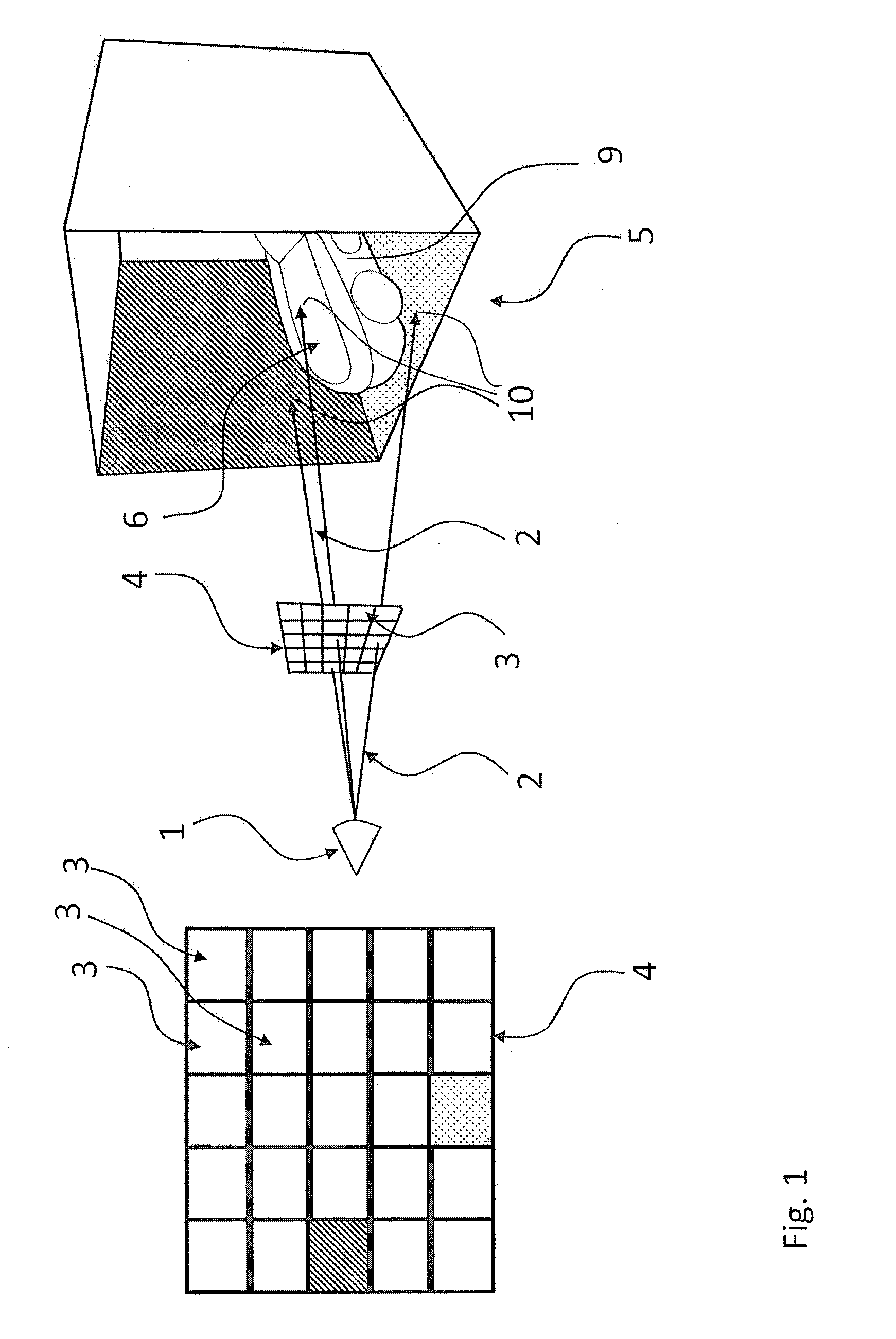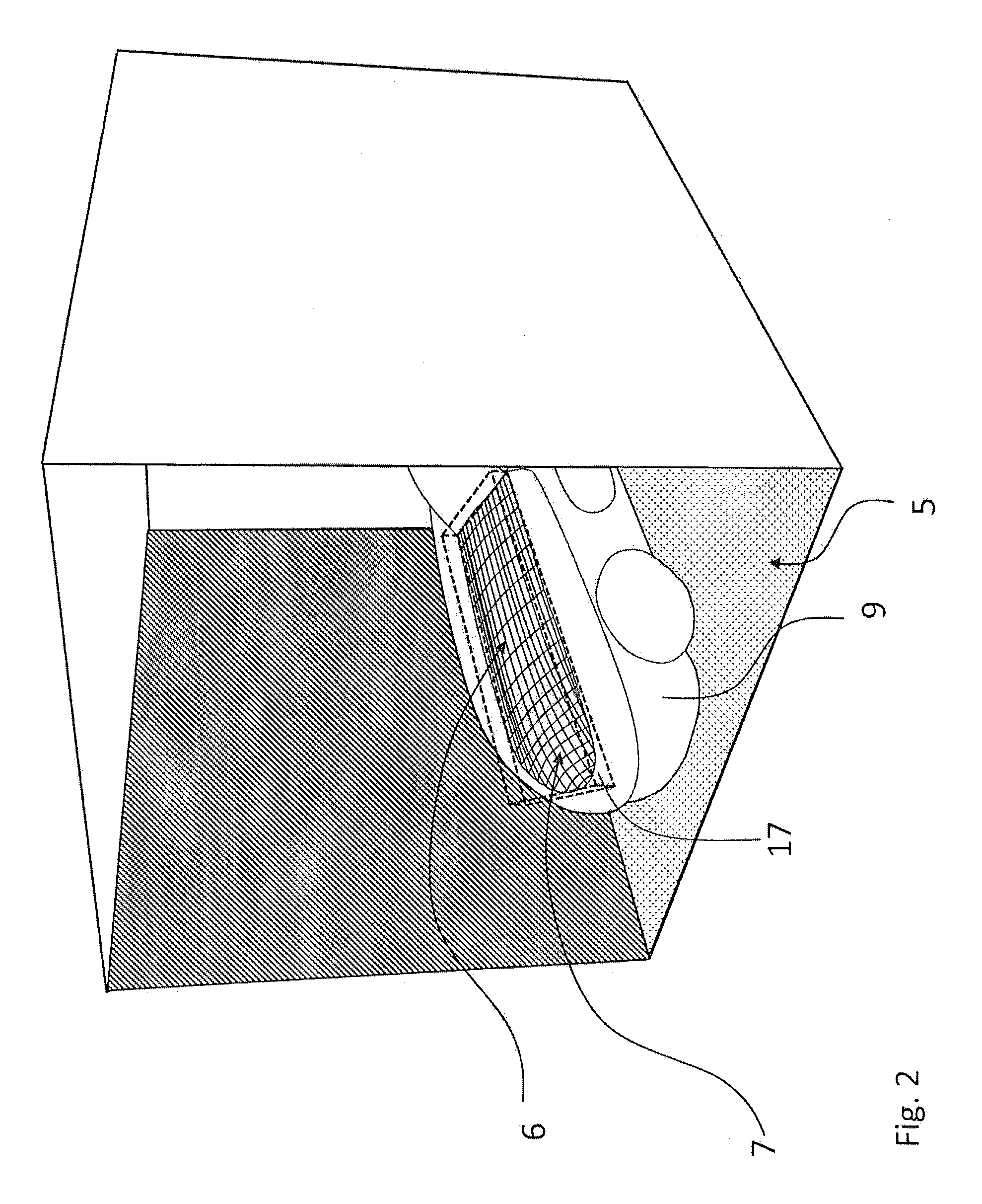Method for visualizing freeform surfaces by means of ray tracing
- Summary
- Abstract
- Description
- Claims
- Application Information
AI Technical Summary
Benefits of technology
Problems solved by technology
Method used
Image
Examples
Embodiment Construction
[0056]FIG. 1 shows a schematic illustration of the ray tracing principle for synthesizing a scene 5 as an image, for example with a resolution of 512×512 pixels 3. For simplicity, only 5×5 pixels 3 are illustrated in an image plane in FIG. 1. Here, virtual beams 2 are sent from a virtual camera 1 into a three-dimensional scene 5 through the pixels 3 in the virtual image plane 4, and said beams are made to intersect with the scene 5. At the intersections 10, illumination information and, from this, a color is determined and assigned to the respective pixel 3. Three beams 2 have been drawn in FIG. 1 in an exemplary fashion, which beams pass through three of the pixels 3 and impinge on the left sidewall, the floor of the scene 5 and on an object 9. Optionally further beams (not drawn in FIG. 1), so-called secondary beams, are emitted starting from the intersections 10, for example in order to simulate mirroring in or transparency of a surface. Those beams 2 that originate from the came...
PUM
 Login to View More
Login to View More Abstract
Description
Claims
Application Information
 Login to View More
Login to View More - R&D
- Intellectual Property
- Life Sciences
- Materials
- Tech Scout
- Unparalleled Data Quality
- Higher Quality Content
- 60% Fewer Hallucinations
Browse by: Latest US Patents, China's latest patents, Technical Efficacy Thesaurus, Application Domain, Technology Topic, Popular Technical Reports.
© 2025 PatSnap. All rights reserved.Legal|Privacy policy|Modern Slavery Act Transparency Statement|Sitemap|About US| Contact US: help@patsnap.com



